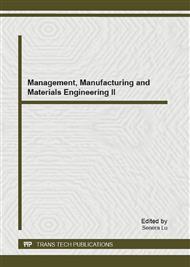[1]
Henriksen HJ, Troldborg L, Nyegaard P, Sonnenborg TO, Refsgaard JC, Madsen B. Methodology for construction, calibration and validation of a national hydrological model for Denmark. Journal of Hydrology 280, 52–71. (2003).
DOI: 10.1016/s0022-1694(03)00186-0
Google Scholar
[2]
Refsgaard, J.C. Terminology, modelling, protocol and classification of hydrological model codes. In: Abbott, M.B. and Refsgaard, J.C., Editors, 1996. Distributed hydrological modellingWater Science and Technology Library 22, 17–39. (1996).
DOI: 10.1007/978-94-009-0257-2_2
Google Scholar
[3]
Roosmalen, L., van, Christensen, B.S.B., Sonnenbrog, T.O. Regional differences in climate change impacts on groundwater and stream discharge in Denmark. Vadous Zone. Management J 6, 554–571. (2007).
DOI: 10.2136/vzj2006.0093
Google Scholar
[4]
Beverly C, Bari M, Christy B, Hocking M, Smettem K . Predicted salinity impacts from land use change: comparison between rapid assessment approaches and a detailed modeling framework. Aust J Exp Agric 45(11): 1453–1469. (2005).
DOI: 10.1071/ea04192
Google Scholar
[5]
Im S, Brannan KM, Mostaghimi S. Simulating hydrologic and water quality impacts on an urbanizing watershed. J Am Water Resour Assoc 39(6): 1465–1479. (2005).
DOI: 10.1111/j.1752-1688.2003.tb04432.x
Google Scholar
[6]
Lørup JK, Refsgaard JC, Mazvimavi D . Assessing the effect of land use change on catchment runoff by combined use of statistical tests and hydrological modeling: case studies from Zimbabwe. J Hydrol 205: 147–163(1998).
DOI: 10.1016/s0168-1176(97)00311-9
Google Scholar
[7]
Siriwardena L, Finlayson BL, McMahon TA. the impact of land use change on catchment hydrology in large catchments: the Comet River, central Queensland, Australia. J Hydrol 326: 199–214(2006).
DOI: 10.1016/j.jhydrol.2005.10.030
Google Scholar
[8]
Thanapakpawin P, Richey J, Thomas D, Rodda S, Campbell B, Logsdon M. Effects of landuse change on the hydrologic regime of the Mae Chaem river basin, NW Thailand. J Hydrol 334: 215–230(2007).
DOI: 10.1016/j.jhydrol.2006.10.012
Google Scholar
[9]
Verstraeten G, Van Rompaey A, Poeson J. Evaluating the impact of watershed management scenarios on changes in sediment delivery to rivers. Hydrobiology, 494: 153–158(2003).
DOI: 10.1023/a:1025406129998
Google Scholar
[10]
Zuazo V H D, Martinez J R F, Raya AM. Impact of vegetation cover on runoff and soil erosion at hillslope scale in Lanjaron, Spain. Environmentalist, 24: 39–48(2004).
DOI: 10.1023/b:envr.0000046345.44569.35
Google Scholar


